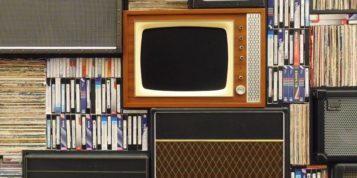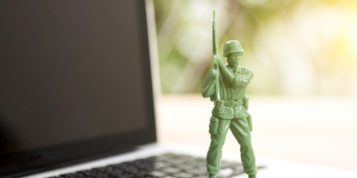A quick browse of a dictionary concludes the definition of beauty is, “a combination of qualities, such as shape, colour, or form, that pleases the aesthetic senses, especially the sight.” It’s simple enough to identify the mainstream media’s idea of beauty using these traits. Shapes: often thin, colour: predominantly white, and form: usually female.
It’s only really in the last decade that people have tried to shift our perceptions and incorporate more diversity into beauty, as they refuse to sit back and accept the status quo. As we open our minds, what once seemed intrinsically rooted within its confines can suddenly take on different meanings and jolt us into a new perspective.
As the tide begins to turn, the public’s ideals of beauty is improving, though there is still much work to be done. To put it bluntly: finding someone without any form of bias is practically impossible. However, if programmed correctly, a machine is capable of removing the ‘human element’ that might actually be the flaw when it comes to how we judge each other’s looks.
The AI vision
In theory, AI should be able to remove all bias and make completely neutral decisions based on the algorithms and datasets that it is being fed. To find ourselves in that position, we first need to trust in the data the machine is using to learn from – which starts with humans.
The first hurdle to cross is deciding what constitutes for ‘true beauty’, with the answer anything but straightforward. Everyone has their opinions on what makes something or someone beautiful, which makes finding a definitive answer somewhat complex. Teaching something to understand a subject that is so open to interpretation won’t happen overnight.
Exploring the waters
At first glance, you could say that AI’s relationship with beauty hasn’t got off to the brightest of starts. The first ever beauty contest judged by machines, which was supposed to use objective factors like facial symmetry and wrinkles, ended up heavily favouring contestants with white skin.
The reason given for the bias was an apparent lack of entries from darker skin contestants, but with plenty of submissions from India and Africa, the responsibility surely lies with the creators of the algorithms that judged participants.
It would be wrong to write off AI’s understanding of beauty based on one contest. There are bound to be learning curves and hiccups along the way, but with more companies trying to create a fairer AI system to judge the true meaning of beauty, the future looks brighter.
The desire to create advanced technology with more brain power to differentiate between types of beauty without alienating races and genders will equate to a higher standard of results. By planting the foundations, machines can then learn the process and evolve to create a fairer, more balanced perception.
The engineers at Lobster have developed their own smart AI, which has a core function that gathers different facial features and body types to offer a more diverse range of results. As well as humans, their AI also takes into account places.
Head of Machine Learning, Vladimir Pavlov, is committed to refining and improving the learning mechanisms, saying, “The basis of the AI system is a large volume of correctly marked data. Algorithms of deep learning allow us to distinguish characteristic features on the images that characterise each class.
“The distinguishing features may differ from the standards accepted by mankind, but they will characterise the beauty. The main task is to correctly create a dataset of training and not retrain the AI model.”
A smarter future
There is one clear goal: to better understand true beauty and reflect it in society in a more diverse way. Ed Newton-Rex, CEO of Jukedeck, feels that progress is being made and that AI will reach a sophisticated level where it is able to judge without prejudice. “When AI is prejudiced, it’s usually because it’s learning human prejudices.
“But one of the great things about AI is its objectivity, and I think that, over time, it will get better at spotting when it needs to account for this kind of prejudice and correct for it.”
Whether it’s a person, place or a thing, the way that we understand beauty is evolving and changing for the better. It may be a small step change to begin with, but the foundations are in place to create a seismic shift. The real interest is very much behind the AI which is acting as a catalyst for change when it comes to recognising what ‘true beauty’ is in 2017 and beyond.
Beauty is in the eye of the beholder, and that beholder is becoming more technically advanced than any human could ever be.




